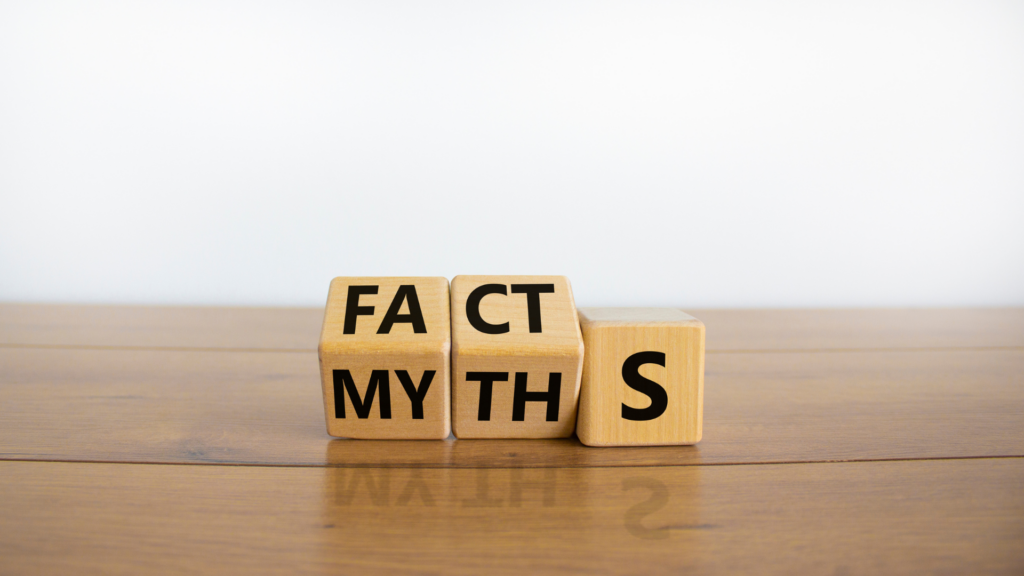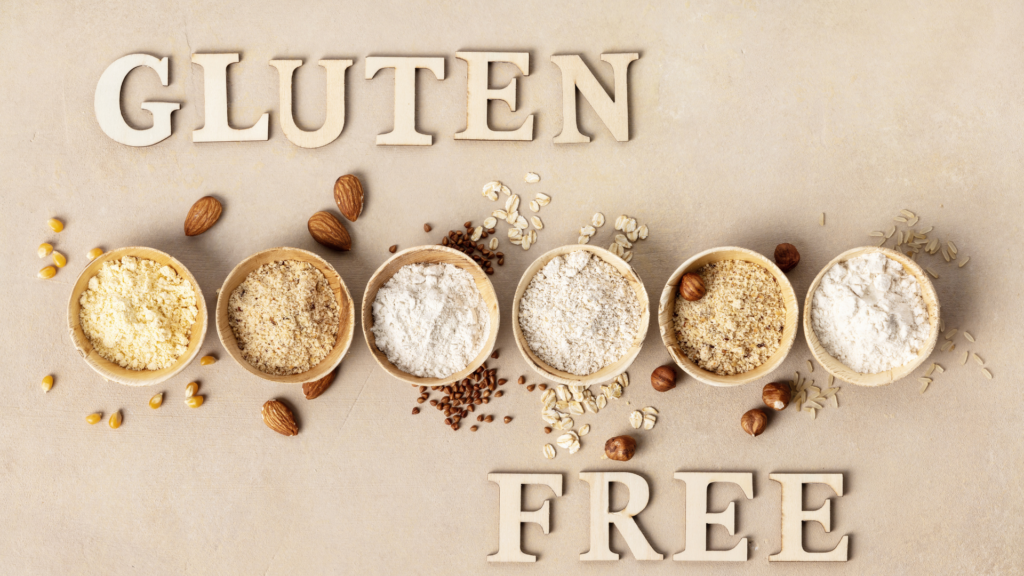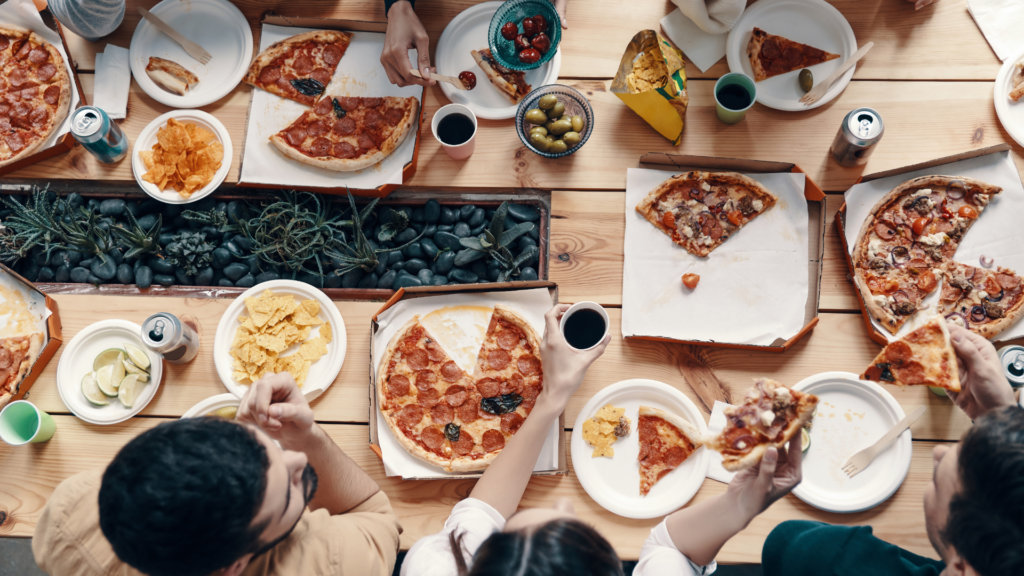The Truth Behind Popular Health and Wellness Myths! (And What to Do Instead)
The Truth Behind Popular Health and Wellness Myths! (And What to Do Instead)
In today’s hyper-connected world, where social media influencers, viral wellness […]


In today’s hyper-connected world, where social media influencers, viral wellness trends, and sleek marketing campaigns dominate our feeds, it’s easier than ever to fall for health advice that looks credible but falls short under real scrutiny. Whether it’s a celebrity-endorsed detox tea claiming to “cleanse your body in 3 days” or the long-standing belief that all carbs are inherently bad, misinformation spreads quickly—and often sounds more convincing than the truth. The danger lies not just in wasted time or money, but in the real risk these myths pose to our physical and mental well-being. Following flawed advice can lead to poor nutrition, chronic stress, disordered eating, and more. That’s why we’re here to break it all down. In this post, we’re diving into some of the most persistent health and wellness myths, exposing the truth behind the hype, and giving you evidence-based insights you can actually trust. Let’s clear the confusion and reclaim your wellness—one myth at a time.
Let’s dive right in to these 5 popular health and wellness myths!
Myth: Gluten-free foods are much healthier for you.

In most cases, we end up believing that just because something is “free” of something (i.e. fat-free, sugar-free, gluten-free) that it’s automatically much healthier than it’s counterpart. That’s not necessarily true. These types of foods might have other additives or other nutritional profile to make up for lack of whatever it is they are “free” from. It’s important to take into consideration the whole nutritional value of what you’re getting, and not just get caught up on the label of the food.
In the case of gluten-free foods, here is why they may not be the healthiest option.
FACT: Unless you have celiac disease or are sensitive to gluten, you do not need to go on a gluten-free diet. Gluten is a naturally occurring protein found in several types of grains, most notably wheat, barley, and rye. While gluten is harmless for the majority of people, it can trigger adverse reactions in individuals with certain conditions like celiac disease, non-celiac gluten sensitivity, or wheat allergies. Avoiding foods that have gluten can lead to not getting the proper vitamins, minerals, and fiber that you need. A gluten-free diet is not designed as a weight-loss plan. Many people mistakenly believe that cutting out gluten will automatically lead to shedding pounds, but that’s not the case. In fact, gluten-free products can be just as high in calories, sugar, and fat as their regular counterparts. Unless you have a medical reason to avoid gluten, there’s no proven benefit to going gluten-free for weight loss. (NIDDK, 2019)
TIP: Before considering to stay away from certain categories of foods, talk with a healthcare professional. They can steer you towards the right direction of what to avoid if you truly are having problems with those types of foods.
Myth: You have to give up your favorite foods in order to lose weight.

Pizzas, cheeseburgers, pastas, sushi, nachos… we could go on and on and list off our favorite foods. When it comes to weight loss, we immediately go into this “all or nothing” mentality of “I either have my favorite foods or I don’t” thinking that that’s what it would take for you to be successful on your journey. Think of it this way, if you had a flat tire on your car, are you going to poke holes on the other tires to make things even or are going to take the time to fix the flat tire so that you can get to your destination? Weight loss doesn’t have to be an “all or nothing” mentality if you’re willing to make the necessary changes.
FACT: Losing weight doesn’t mean you have to completely give up the foods you love. In fact, allowing yourself small portions of your favorite high-calorie treats—whether it’s chocolate, chips, or pizza—can help you stay on track and avoid feeling deprived. The key is balance and awareness. As long as you’re mindful of your portions and keep an eye on your overall calorie intake, you can still enjoy these foods in moderation. Remember, weight loss comes down to a simple principle: you need to burn more calories than you consume. Creating that calorie deficit doesn’t mean eliminating joy from your meals—it just means making thoughtful choices and staying consistent over time. (NIDDK, 2019)
TIP: Cutting back on foods that are high in calories—especially those with little nutritional value—can be an effective way to support weight loss. While it’s important not to overly restrict or eliminate entire food groups, being mindful of high-calorie items like sugary drinks, fried foods, and desserts can help reduce your overall intake. The number of calories your body needs each day depends on several factors, including your age, sex, and level of physical activity. The Dietary Guidelines for Americans, 2020–2025 provide general recommendations to help you understand what a healthy calorie range looks like for your individual needs. Using these guidelines as a reference can help you make informed food choices that support both weight management and overall health.
Myth: Switching to a vegetarian lifestyle may help you shed pounds and boost your well-being.

Going vegetarian does not simply mean switching up what you are eating. It is a lifestyle. Many people choose to go vegetarian for many reasons: religion, animal welfare, environmental impact, or simply just preference. But, just because you go vegetarian, this will not solve all of your health and wellness problems.
FACT: Some studies suggest that following a healthy vegetarian diet—or one primarily based on plant-derived foods—may be associated with a lower risk of obesity, reduced blood pressure, and a decreased chance of developing heart disease. These potential benefits are often linked to the increased intake of fiber-rich vegetables, fruits, whole grains, and legumes, as well as the lower consumption of saturated fats typically found in meat.
However, simply eliminating meat from your diet doesn’t automatically guarantee weight loss. In order to lose weight, you still need to consume fewer calories than you burn. It’s possible for vegetarians to gain weight if their diet includes a high amount of processed foods, sugary snacks, fried items, and other calorie-dense options. Like any eating plan, a vegetarian diet should be balanced and mindful of portion sizes and nutritional quality to support healthy weight management. (NIDDK, 2019)
TIP: Due to elimination of certain foods on a vegetarian diet, its tough to get all the vitamins and minerals needed for your body. Think about supplementing your days with vitamins and minerals that you may be lacking. Read Nutrition and Healthy Eating from Mayo Clinic for more information on how to get the best nutrition if you are planning to go towards this lifestyle.
Myth: Short bursts of physical activity don’t count—it has to be done for longer stretches to matter.
This myth comes from outdated and misunderstood concepts. We’ve all heard the phrase “no pain, no gain”, right? This cultural belief that exercise has to be intense and exhausting makes us think that this is what we have to do to see progress. Many influencers in the media will often highlight doing longer periods of working out and doing high intense exercises, to which influences our beliefs of doing quick and moderate movements isn’t enough. Not true at all!
FACT: There is no need to be active for a long period of time to get the recommended amount of physical activity. The Centers for Disease and Control Prevention (CDC) recommends adults to get 150 minutes of moderate-intensity a week, to which can be broken down to 30 minutes a day, 5 days a week. (CDC, 2023)
Brisk walking is a common example of moderate-intensity exercise. You don’t have to do it all at once—you can break it into shorter sessions, like 10 minutes at a time, three times a day on five or more days each week.
TIP: Look for simple opportunities to add brief bouts of physical activity into your daily routine. Even small changes can make a big difference over time. For example, during the workday, consider taking a quick 10-minute walk to recharge or, when possible, turn a sitting meeting into a walking one. Choosing the stairs over elevators or escalators is another easy way to sneak in movement. If you take public transportation, try getting off a stop early and walking the rest of the way. And when meeting up with a friend, opt for a walk-and-talk instead of sitting down for a meal—it’s a great way to stay active while catching up.
Myth: Strength training isn’t effective for improving health or losing weight because it causes you to “bulk up.”

It’s easy to associate weight lifting with bodybuilders as they try to gain significant muscle mass. There’s also the fear of the unknown as for those who have never lifted weights before, it can be seen as intimidating and daunting for beginners as they’re not sure how to do it safely and effectively. In reality, muscle growth really depends on many factors—like diet, workout intensity, and hormones.
FACT: Incorporating strength-building activities—like lifting weights, doing push-ups, or practicing certain forms of yoga—just two to three times per week can help you develop stronger muscles, but it won’t make you “bulk up.” Significant muscle growth typically requires intense strength training combined with specific genetic factors, a high-protein diet, and often years of dedicated effort.
For most people, moderate resistance exercises lead to lean muscle development, not bulky muscle mass. These activities play a crucial role in maintaining overall health. They support bone density, improve posture and balance, and can help prevent injury. Just like aerobic exercise, strength training also contributes to weight management by increasing your lean muscle mass—which in turn boosts your metabolism, helping your body burn more calories, even at rest.
In short, adding muscle-strengthening exercises to your routine is a smart, sustainable way to build a healthier, stronger body without the fear of becoming overly muscular. (NIDDK, 2019)
TIP: Incorporating activities like using large rubber bands or resistance bands, performing sit-ups, or even engaging in household or yard work that requires lifting, digging, or other physical tasks can be great ways to build and strengthen muscles. Resistance bands, for example, offer a convenient and versatile way to engage various muscle groups by providing adjustable levels of resistance during exercises.
Even everyday chores, such as lifting heavy bags of soil, shoveling snow, or carrying groceries, can serve as effective muscle-strengthening activities. These types of movements challenge your muscles and improve functional strength, which is useful for everyday tasks. Over time, such activities can contribute to better muscle tone, increased endurance, and overall fitness—without the need for expensive equipment or gym memberships.

As with any area of life, health and wellness are full of myths and misconceptions that can steer us in the wrong direction. By questioning common beliefs and focusing on evidence-based practices, we can make more informed choices that truly benefit our bodies and minds. Remember, there’s no one-size-fits-all approach to health—what works for one person may not work for another. Stay curious, keep learning, and don’t be afraid to challenge the myths that hold you back from reaching your full potential. Your wellness journey is personal, and it’s always worth exploring with an open mind.
Resources:
CDC. (2023, December 20). Physical activity for adults: An overview. Physical Activity Basics. https://www.cdc.gov/physical-activity-basics/guidelines/adults.html
NIDDK. (2019, March 28). Some Myths about Nutrition & Physical Activity | NIDDK. National Institute of Diabetes and Digestive and Kidney Diseases. https://www.niddk.nih.gov/health-information/weight-management/myths-nutrition-physical-activity

